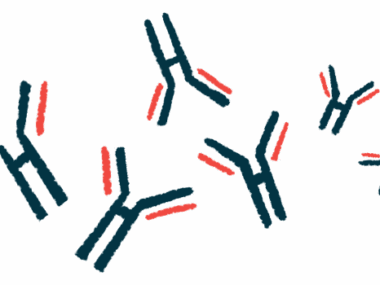Renal Risk Score a better predictor of long-term kidney function
Incorporating score could aid in choosing treatment based on prognosis
Written by |

The Renal Risk Score may be a better histopathologic classification model than Berden for predicting long-term loss of kidney function in people with ANCA-related vasculitis (AAV) who have glomerulonephritis, an inflammation of the kidneys’ filtering units, a study finds.
Incorporating the renal risk score into clinical decision-making could help guide treatment choices for patients based on how likely they are at having a poor prognosis and developing end-stage kidney disease, when the kidneys no longer work to meet the body’s needs.
The study, “The prognostic value of two histopathologic classification models of ANCA-associated glomerulonephritis: a prospective study,” was published in the Journal of Nephrology by researchers in Greece.
In AAV, overly active immune cells cause small blood vessels to become inflamed. When inflammation hits the kidneys, it can cause glomerulonephritis, which occurs when the kidneys’ glomeruli, or filtering units, become damaged. Glomerulonephritis “starts as an acute, urgent situation that needs immediate diagnosis and treatment, and ends up as a chronic progressive disease that needs treatment modification,” the researchers wrote.
Checking how well the kidneys are working in the months after a diagnosis of AAV can help forecast the risk of kidney failure. The Renal Risk Score is better than other models for predicting kidney failure, at least in children.
Renal risk score vs. Berden
Here, the researchers compared the Renal Risk Score versus the Berden classification for predicting short- and long-term kidney function in 94 adults with AAV and glomerulonephritis (AAV/GN), ages 18-82, who had a kidney biopsy to remove a piece of tissue for testing.
All the patients had received cyclophosphamide plus methylprednisolone into the vein, or intravenously, followed by oral corticosteroids to induce remission, or no disease activity, and corticosteroids and azathioprine to maintain it.
The Renal Risk Score divides the risk of end-stage kidney disease into low (0 points), medium (2–7 points), and high (more than 8 points), whereas the Berden classification divides the pattern of kidney damage into focal, crescentic, mixed, and sclerotic.
While the Berden classification focuses on glomerular changes, scoring in the Renal Risk Score is based on the proportion of healthy glomeruli, the presence of scarred tissue or atrophy (wasting) in tubules that return needed substances to the blood, and the estimated glomerular filtration rate (eGFR).
Based on the Berden classification, 24 patients had focal, 35 had crescentic, 21 had mixed, and 14 had sclerotic glomerular changes. The proportion of patients who required dialysis to replace kidney function differed among groups in the first six months after diagnosis.
It didn’t differ at 60 months, or five years, however, which is “considered the chronic phase of the disease.” This suggests the Berden classification may not be able to predict who is at risk for end-stage kidney disease in the long term.
According to the Renal Risk Score, eight patients had low, 47 had medium, and 39 had high risk of developing end-stage kidney disease. Both eGFR, a measure of how well the kidneys are working, and the proportion of patients requiring dialysis differed among groups up to 60 months.
After 60 months, 40 (42.6%) patients had progressed to end-stage kidney disease, 26 (27.7%) had at least one relapse, and four (4.3%) died. Neither the Renal Risk Score nor the Berden classification predicted relapse, or the return of signs of AAV/GN after remission.
“Our results demonstrated similar results of the two classification systems in the short term, but showed clear superiority of the Renal Risk Score in predicting long-term outcome of renal function,” the researchers said.





